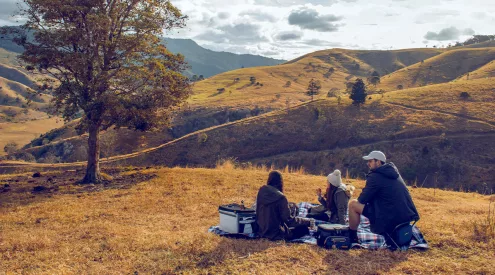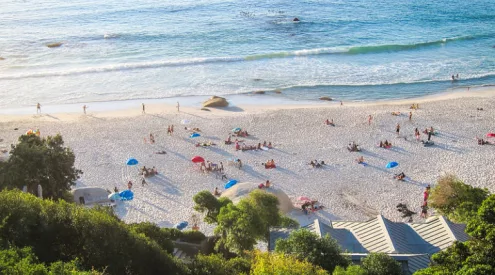We’ve asked leading dermatologists Dr. Dagmar Whitaker from Cape Town and Dr. Albert Viljoen from hellodoctor.com to decipher sunscreen lingo so you can properly protect yourself from our harmful African sun.

1. What are UV rays and why are they dangerous?
Ultraviolet (UV) light is ‘invisible’ radiation emitted by the sun, even on cloudy days and take two forms – UVA and UVB rays. The effects of UVB rays are instant causing visible sunburn and UVA rays cause long-term skin damage contributing to melanomas and aging.
2. What is SPF and how does it work?
SPF is the sun protection factor assigned to sunscreens indicating the safe amount of sun exposure without skin damage. Safe sun time is area specific – in Cape Town summer safe exposure is only 10 minutes before damage occurs. An SPF of 15 means you’re protected for 15 times the safe sun time; in other words 15 x 10 minutes, or 150 minutes. For SPF 30, you’re safe for 300 minutes.
3. Does sunscreen expire?
Yes, but if correctly applying sunscreen there should never be left overs – most people apply too little. Dr Whitaker says you should apply at least 30 ml (two big tablespoons) of sunscreen every day. Your average bottle is about 150 ml, which is only five applications.
4. How do I buy sunscreen
Use the highest factor SPF you can find and check the bottle for accreditations – there are many options, but we’ve chosen CANSA approved products that also comply with international regulations. Make sure it offers protection from both UVA and UVB rays and check for water resistance if sweating or swimming.

This travel-sized Clicks Sun Protect is an excellent buy fulfilling all these categories and can permanently live in your backpack or beach bag. It’s SPF 40, offers both UVA and UVB protection, water resistant and the nozzle sprays the cream evenly.
5. Which sunscreen is best for kids?
Children have sensitive skin and are extremely busy so slather it on. Use the highest SPF (at least 30) and choose a spray or stick that’s easy to apply. Most skin damage occurs before age 18 so keep babies and small children out of direct sunlight.

Pack Badger Sports Stick into your kids’ sports bag and teach them to always apply sunscreen. It’s painless to put on, is water resistant for 80 minutes and only contains natural ingredients. The main component is zinc oxide but surprisingly it rubs into the skin easily and doesn’t leave white stripes.
6. When should I apply sunscreen?
Apply sunscreen first thing in the morning every day covering at least your face, chest and hands – it should be as habitual as brushing your teeth. Apply sunscreen at least 30 minutes before you hit the beach or go hiking.

Get into the routine of using sunscreen with a non-greasy product like Eucerin SPF 50 Sun Fluid. It’s small enough to keep on you, feels like everyday face cream and fits all the requirements of a good sunscreen as mentioned earlier.
7. Does after sun work and should I use it?
Yes, after sun helps stop the ‘after-burn’, which continues damaging the skin even when inside. You need to help rehydrate the skin, drink water and help the skin’s DNA repair.

Coverderm Filteray Body Plus Spray contains Aloe Vera after sun protection keeping your skin hydrated and defending it with high SPF 50 protection. It smells like a summer island, is water resistant and sticky when first applied, but this wears off as it sinks in.























